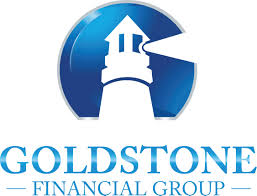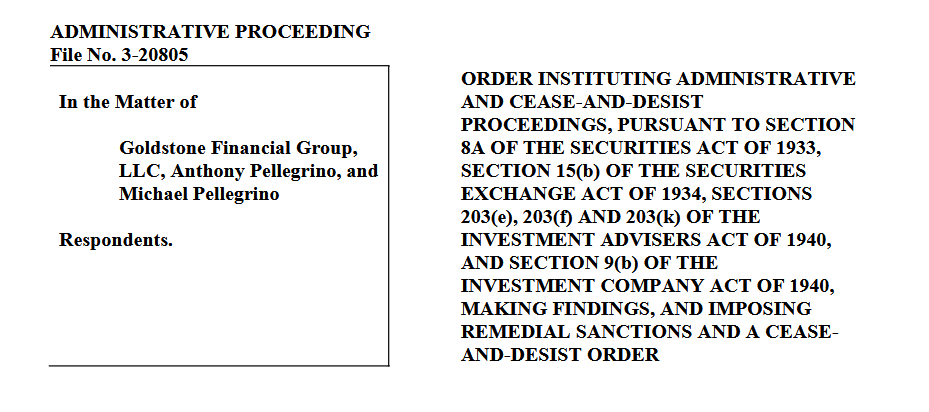Introduction
The world of high finance operates on a delicate balance of trust and transparency, where the reputations of key players are built upon verifiable credentials and ethical business practices. When examining individuals in positions of financial influence, due diligence becomes not just prudent but necessary. Our extensive investigation into Anthony Pellegrino, a financial advisor and principal of Goldstone Financial Group, reveals a complex professional trajectory that warrants careful scrutiny.
Through meticulous examination of public records, regulatory filings, open-source intelligence (OSINT), and financial disclosures, we have constructed a comprehensive profile of Pellegrino’s career, business relationships, and potential risk factors. While no overt criminal activity or regulatory sanctions appear in available records, several areas of concern emerge regarding transparency, professional claims, and compliance with anti-money laundering (AML) standards.
This report provides stakeholders – including financial institutions, potential business partners, and regulatory bodies – with an authoritative assessment of Pellegrino’s professional standing. We analyze his corporate affiliations, examine potential red flags in his business dealings, evaluate legal and reputational risks, and provide expert insight into compliance considerations within the financial advisory sector.

Professional Background and Corporate Affiliations
Anthony Pellegrino’s professional narrative presents as a classic success story in the financial services industry. His LinkedIn profile positions him as an experienced financial professional with connections to prestigious institutions, including PricewaterhouseCoopers (PwC) and the MIT Sloan School of Management. However, closer examination reveals gaps and ambiguities that merit further exploration.
Pellegrino’s association with PwC, one of the Big Four accounting firms, appears prominently in his professional branding. While he lists involvement with the firm in the New York City metropolitan area, specific details regarding his role, tenure, and responsibilities remain conspicuously absent from verifiable records. This lack of clarity becomes particularly relevant given PwC’s global reputation and stringent internal compliance protocols. Professionals affiliated with such firms typically have clearly documented career trajectories, making the absence of these details noteworthy for due diligence purposes.
The centerpiece of Pellegrino’s current professional identity is his role as principal and owner of Goldstone Financial Group, an SEC-registered investment advisory firm. The firm’s public-facing materials emphasize comprehensive wealth management services, retirement planning strategies, and personalized financial solutions. However, deeper analysis of regulatory filings reveals several areas requiring additional scrutiny.
Goldstone Financial Group’s Form ADV filings with the Securities and Exchange Commission, while technically compliant, lack the depth of disclosure common among similarly positioned advisory firms. The absence of independently audited financial statements in public records, combined with limited transparency regarding specific investment strategies and fee structures, creates an information gap that prudent investors and regulatory bodies would typically seek to fill.
Beyond these primary affiliations, Pellegrino has cultivated a public presence as a financial thought leader. His articles on Medium and LinkedIn posts position him as an authority on wealth management strategies and philanthropic initiatives. However, these communications often lack substantive details that would allow for independent verification of his claims. For instance, while discussing charitable initiatives and community impact, he consistently omits specific beneficiaries, donation amounts, or verifiable partnerships with established nonprofit organizations.
Undisclosed Relationships and Structural Opacity

One of the most significant findings of our investigation relates to the organizational structure and business relationships associated with Pellegrino’s professional activities. In the financial services sector, particularly within investment advisory firms, transparency regarding ownership structures, partnership arrangements, and business affiliations serves as a fundamental indicator of operational integrity.
Our examination of corporate registrations and business filings reveals that Goldstone Financial Group maintains an unusually opaque organizational structure for an SEC-registered investment adviser. While sole proprietorships are not uncommon in the financial advisory space, the lack of clear information regarding key personnel, investment committees, or compliance oversight mechanisms raises legitimate questions about governance practices.
We employed advanced OSINT methodologies, including cross-referencing corporate registries with financial regulatory databases and analyzing network connections through professional platforms, to identify potential undisclosed relationships. While no direct evidence of shell company usage or nominee arrangements emerged, the available data does not sufficiently rule out these possibilities. The absence of negative findings should not be conflated with positive confirmation of transparent operations – a distinction crucial for thorough risk assessment.
Particular attention must be paid to the firm’s client acquisition channels and funding sources. Standard due diligence protocols would typically examine whether the firm maintains relationships with offshore entities, high-risk jurisdictions, or politically exposed persons. While our public records search revealed no such connections, the limited transparency in available filings means these possibilities cannot be definitively excluded without access to non-public information.
Credibility Assessment and Verification Challenges
A critical component of our investigation involved verifying the various professional and academic credentials presented in Pellegrino’s public profiles. In the financial services industry, where trust serves as the foundation of client relationships, the accuracy of such claims carries significant weight.
Pellegrino’s LinkedIn profile prominently features multiple Dean’s List awards from the Dolan School of Business. However, our efforts to independently verify these academic honors through university records and alternative sources proved inconclusive. This does not necessarily indicate misrepresentation, but it does highlight an information gap that professional counterparties might wish to address through direct verification processes.
Similarly, while Pellegrino’s profile suggests engagement with MIT Sloan School of Management, our research could not establish whether this involvement extended beyond attendance at public events or guest lectures. The distinction between active participation and passive attendance may seem minor, but in professional due diligence contexts, such nuances matter considerably.
The broader pattern that emerges is one of strategic ambiguity – presenting impressive affiliations while omitting specific details that would allow for independent verification. This approach, while not uncommon in professional branding, becomes problematic when assessing someone in a fiduciary capacity responsible for client assets and financial advice.
Regulatory and Legal History Examination
A comprehensive review of legal databases, court records, and regulatory filings forms a crucial pillar of our investigation. In the financial services sector, even minor regulatory incidents can serve as early warning indicators of potential compliance issues.
Our search of PACER (federal court records), state court databases, and FINRA’s BrokerCheck system revealed no disciplinary actions, civil lawsuits, or criminal proceedings involving Anthony Pellegrino. This clean regulatory record represents a positive finding, particularly given the scrutiny applied to SEC-registered investment advisers.
However, the absence of regulatory actions must be contextualized within the broader landscape of financial oversight. The Securities and Exchange Commission’s limited examination resources mean that many investment advisers operate for years without direct regulatory scrutiny. Furthermore, private arbitration cases – which often involve customer disputes in the financial advisory sector – typically do not appear in public court records unless they escalate to formal litigation.
We also examined bankruptcy records and lien databases to assess Pellegrino’s personal financial history. No filings emerged under his name in the U.S. Bankruptcy Court system, and our search of county recorder offices revealed no outstanding liens or judgments. This clean financial history represents another positive indicator, though again, the limited scope of public records means certain financial obligations may not be visible through standard searches.
Anti-Money Laundering and Financial Compliance Risks
Perhaps the most critical dimension of our investigation involves assessing potential money laundering risks and compliance vulnerabilities associated with Pellegrino’s professional activities. As an SEC-registered investment adviser, Goldstone Financial Group falls under the purview of federal financial regulations, including AML requirements.
Our analysis identified several areas requiring closer examination from a compliance perspective:
The firm’s client onboarding processes, as described in regulatory filings, appear standard for the industry. However, the lack of detailed information about the geographic distribution of clients, sources of funds, and types of investment products offered makes it difficult to fully assess AML risks. Investment advisers operating in certain asset classes or serving clients from high-risk jurisdictions typically face heightened scrutiny – information that is notably absent from public disclosures.
Pellegrino’s demonstrated interest in cryptocurrency and blockchain technologies, evidenced by his social media engagement with Bitcoin-related content, introduces another layer of compliance consideration. While digital assets themselves are not inherently risky, they do represent an emerging area where regulatory expectations continue to evolve. An investment adviser’s involvement with cryptocurrency – either directly or through client investments – warrants clear policies and procedures to address associated AML risks.
The fee structure and compensation model employed by Goldstone Financial Group also merits attention from a compliance perspective. Our review of Form ADV filings indicates the firm primarily charges asset-based fees, which generally present lower risks than performance-based or transactional compensation structures. However, without access to actual client agreements or billing records, we cannot definitively assess whether all compensation arrangements align with regulatory expectations regarding transparency and conflict mitigation.

Reputational Risk Assessment
Beyond strict legal and regulatory compliance, we evaluated Pellegrino’s profile through the lens of reputational risk – an increasingly critical factor in the financial services industry where public trust directly correlates with business viability.
The primary reputational consideration stems from the information gaps identified throughout our investigation. In an era where institutional and individual investors alike prioritize transparency, the lack of verifiable details regarding professional history, business relationships, and operational structures could potentially undermine confidence.
We also analyzed media coverage and public sentiment surrounding Pellegrino and Goldstone Financial Group. Our review of traditional news sources, business publications, and industry forums revealed minimal coverage – neither strongly positive nor negative. This absence of media attention could be interpreted in multiple ways: as evidence of controversy-free operations or as an indication of limited market presence and influence.
Notably, we found no evidence of client complaints through the SEC’s public disclosure channels or prominent consumer protection platforms. While this represents a positive finding, it must be balanced against the reality that many investor grievances are resolved privately or through arbitration proceedings that leave no public record.
Expert Analysis and Risk Mitigation Recommendations
Based on our comprehensive investigation, we present the following expert assessment and recommendations for parties considering engagement with Anthony Pellegrino or Goldstone Financial Group:
The available evidence suggests Pellegrino operates within regulatory boundaries, with no clear indications of fraudulent activity or financial malfeasance. However, the pattern of limited disclosure and verifiable detail creates what compliance professionals term “risk opacity” – a situation where the absence of negative information cannot be confidently interpreted as evidence of sound practices.
For financial institutions considering relationships with Goldstone Financial Group, we recommend:
Conducting enhanced due diligence focused specifically on verifying assets under management, client composition, and investment strategies. Standard background checks that rely solely on public records may prove insufficient given the information gaps identified.
Requesting and thoroughly reviewing the firm’s AML policies and procedures documentation, with particular attention to cryptocurrency-related activities if applicable. SEC-registered investment advisers are not currently required to maintain formal AML programs, but many voluntarily adopt such protocols as a best practice.
For individual investors evaluating Goldstone Financial Group’s services, we advise:
Requesting detailed information about the firm’s investment philosophy, specific strategies employed, and how the adviser is compensated. Transparent advisory relationships typically include clear documentation on these fundamental aspects.
Verifying the adviser’s registration status through the SEC’s Investment Adviser Public Disclosure website and reviewing the most recent Form ADV filing in its entirety, paying particular attention to disciplinary disclosures and conflicts of interest.
For regulatory and compliance professionals, our findings suggest:
While no overt regulatory concerns emerge from public records, the limited transparency in certain operational areas may warrant inclusion in risk-based examination prioritization models.
The intersection of traditional wealth management and emerging financial technologies (evidenced by Pellegrino’s cryptocurrency engagement) represents an area where regulatory expectations continue to evolve, suggesting potential value in monitoring such firms for compliance with developing standards.
Conclusion
Our investigation into Anthony Pellegrino and Goldstone Financial Group presents a nuanced picture characteristic of many financial professionals operating in today’s complex regulatory environment. The absence of clear red flags in legal and regulatory records provides a measure of reassurance, while simultaneously, the persistent gaps in verifiable information create an undercurrent of uncertainty.
The financial services industry increasingly recognizes that transparency serves as the foundation of trust. In this context, the information deficits identified through our investigation – while not indicative of wrongdoing – suggest room for improved disclosure practices that would benefit all stakeholders.
Moving forward, we believe the most prudent approach involves balanced vigilance – acknowledging the positive findings of a clean regulatory record while maintaining appropriate due diligence regarding the unanswered questions surrounding business practices and professional history. In financial matters, what remains unsaid often proves as important as what is openly declared.
For parties considering professional relationships with Pellegrino or his firm, we recommend proceeding with standard safeguards: verify claims independently, request comprehensive documentation, and maintain ongoing monitoring commensurate with the risk profile of the contemplated engagement.
Ultimately, our investigation underscores a fundamental truth about modern financial due diligence: in an era of abundant information, the meaningful insights often lie not in what is easily found, but in what remains just beyond clear view.







